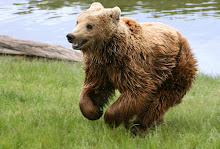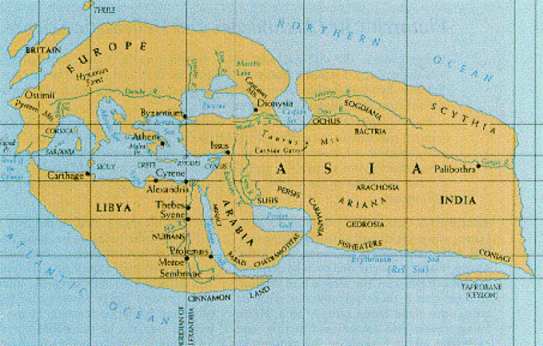Captain Cassiovaldus was not too keen on sailing to Cimbrii Chersonesos, but eventually an agreement was reached where he gets 4700 Denarii (almost all their cash), the stallions and should they succeed, an advantageous deal if a new trade route is set up. All will go to his son should he not survive. Supplies are traded with Virodomarus (mostly as gifts) and they set out on the trading ship Garm into the virtually unknown.
Supplies are traded/gained from Virodomarus, and on Cassiovaldus’ advice Lucius Cornelius secures the sorts of goods that Germans like:
* 17 Longswords (later to be known as La Tène swords)
* 6 Chain shirts
* 18 large and elaborate spearheads
* 24 long knives/short swords (much like the later Scramasax or contemporary Makhaira)
* Short Swords, not Gladius Hispaniensis, but rather more like the Greek Xiphos.
* 4 Bronze cauldrons.
* 24 pieces of jewelry of various quality and ranging from belts to finger rings.
Captain Cassiovaldus has traded with the Batavii and Frisii before, never north of that. But he reckons they can get names of local chieftains to visit, anchorages to use and possibly local guides along the way.
After a day’s sailing north they sail into the mouth of the Rhenus, the river that the Greeks say are the biggest in this part of the world. And heave to at a small oppidum on the Batavian Island, Batavodurum, seat of the Batavian King, Alu-Sikijáz (Sigurd?) where the Warchief, Ánsuhárjáz receives them at the landing and a feast is held.
The Batavians are a German tribe, once part of the Chattii, but now separated from them and forming their own tribe/nation. They are renowned as warriors and for their ability to swim in all arms and armour as well as for excellent horsemanship. They are allies of Caesar and his bodyguard is made up of these tall and fierce men.
And tall and fierce they are, even the Belgae seems civilised compared to them. At first sight the only difference is that they are uniformly tall and blond or reddish-blond, while the Gauls especially had many redheads and people with brown hair, even black was not so unusual as Greeks had mingled with the locals in Southern Gaul for 700 years or more. Not so the Batavians, the Gauls in the area has been evicted almost to a man, so few traces of their blood remain. But as you look closer you see the oppidum is smaller, almost a village, and their organisation and hierarchy looser. There is a King, but his power is not supreme, other magnates are almost his equals and he gets elected from amongst these, often from only a few families, but still…
The Warchief too is elected, in this case they are brothers and in peace his power is small; his only armed force are their retinues, but there is no supreme ruler as such. The magnates may choose to follow another leader and in fact even ally themselves to foreign Kings, chieftains (few German tribes has a King) and Warchiefs with greater glory or promise of it. Glory in war is the greatest measure of a man’s worth here, especially in the aristocracy and religion is by and large cared for by the king/magnates/chieftains with a few dedicated priests, Sejd-men and Völvas as advisors.
Law is oral and remembered by wise old men whose sole job is to do this, and judgement is passed at Things (meetings) a large one annually or on the local, once every season. Trading, marriages, etc are also agreed on or dealt with on these affairs. Enforcement is in the hand of the individual pursuing his case and for this reason the common men has tied themselves to local magnates. These ties too may shift depending on the luck, charisma, wisdom and strength of the local lord.
Military is a muster of magnates/aristocrats with their following if an offensive campaign is waged. The top of the pyramid of whatever power-hierarchy the warrior is in calls on his allies to muster and they do so. Magnates might be in several such power-hierarchies and thus sometimes have to choose if two or more powerful men they owe allegiance is in conflict. The theoretical top is the King/Chieftain and counsellors/most powerful allies/most powerful magnates in the tribe.
It is all terribly complicated and no doubt contributes to the amount of strife and feuds in the Germanic system, but is vaguely recognisable to the Romans as somewhat like their own Client system.
Wooden artwork is less elaborate and slightly different then what was seen in Belgae, but also with recognisable similarities. Like the Gallic cups passed around with horns for drinking.
King Alu-Sikijáz is an impressive and charismatic warrior past his prime fighting condition at 40- 50-ish, but a man people will follow and probably still a dangerous opponent at 6’6’’ (Roman feet and inches, 192.6 cm) with a still-beautiful wife and several sons not yet grown. Impressed by this barbarian king, Lucius decides to gift him the elaborately decorated longsword he himself got from king Dumnorix of the Menapii and in return gets gold-inlaid drinking horns and gold armrings.
To show Roman proves, Lucius Cornelius also decides to match Caius Cominius against an equally matched Batavian hirdman if such can be found. It is not easy, Caius Cominius is a towering 6’1’’ (180 cm) for a Roman, but few hirdmen are that small. Eventually Bidáwárjáz is found to match best and a long wrestling match ensures between two very evenly matched opponents. In the end the oiled and tenacious Dolabra wins and Lucius can reap his winnings from betting; something the Germans, are crazy about, like dice. The astute Caius Caecilius notes that the coins are new denarii depicting Gaius Julius Caesar as imperator, which is not surprising as the Batavii are firmly in Caesar’s camp.
As the feast and drunkenness proceed, Lucius makes a point of returning his winnings as gifts and as Germans are well-nigh guileless (especially under the influence of alcohol), the Romans learn much of the political system (see above), its workings and current alliances of/in the Batavii, who generally regard them as friends as they make it known they have fought in Caesar’s campaigns. They also learn that another big (and prepared) feast will be given the day after as a Cheruscan magnate is about to arrive with word from his tribe.
Sunday, 18 October 2009
Subscribe to:
Post Comments (Atom)


_running.jpg)







And yes I am fully aware that this looks remarkably like the Icelandic system 1000 years later and how I interpret Scandinavian Viking Age, but it is all we have to go at as I have little belief in the “Original Socialism” interpretation. It goes against all we know as well as the archaeological evidence. This here is my interpretation to get a system we can work within for the campaign.
ReplyDeletePlayers can ask me any questions they wish about the Batavian political system, culture etc not covered above.
Why aren't you labelling your posts to make it easier to search for stuff?
ReplyDeleteWill do at some point, but I might want a pointer on how as I have not tried yet and dunno whether I can figure it out.
ReplyDelete